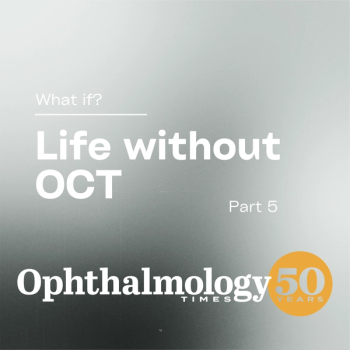
Information on IOP fluctuation holds clues for treatment
Recent research is yielding interesting information about IOP fluctuation, its role as a glaucoma progression risk factor, and how it is affected by treatment. The findings, expected to have implications for patient management, have focused attention on the ability of treatments to suppress the diurnal IOP curve.
Key Points
Boise, ID-Advancements in understanding of IOP fluctuation may have significant implications for patient management, said Adam C. Reynolds, MD, a glaucoma specialist in private practice in Boise, ID, who has reviewed recent literature about IOP fluctuation and the relevance of those findings for patient care.
"There has been a longstanding assumption that higher variation in IOP in treated glaucoma patients is associated with an increased risk of progression," Dr. Reynolds said.
"Emerging information confirming that relationship and providing new insights about the association between IOP fluctuation and other physiologic factors, as well as about how and when IOP fluctuates, may have value for improving patient prognosis, management, and the development of better treatments," he said.
Several recent studies have shown an association between IOP fluctuation over the long term and risk of glaucoma progression. In 2000, Asrani et al. analyzed home tonometry data from 105 treated eyes with a mean follow-up of 5 years. Researchers found that a large fluctuation in diurnal IOP was a significant risk factor for progression.
Bergeá et al. analyzed data from patients with newly detected glaucoma followed for 2 years in a prospective treatment trial and showed that visual field deterioration correlated better with IOP fluctuation than with IOP at the start of treatment or the degree of IOP reduction achieved.
In addition, an analysis of data from the Advanced Glaucoma Intervention Study found that patients whose intervisit IOP variation was more than 3 mm Hg had a greater risk of visual field progression than their counterparts with lower variation in IOP.
"In contrast to those findings, IOP fluctuation was not found to be an independent risk factor for progression in the Early Manifest Glaucoma Trial. However, those results are controversial, and the bottom line is that most people believe intervisit variation and higher levels of IOP fluctuation are associated with a greater likelihood of glaucoma progression," Dr. Reynolds said.
"Therefore, if a patient in my practice demonstrates significant intervisit fluctuation and I think it is a characteristic of the glaucoma rather than a compliance issue, I believe that individual should be treated more aggressively earlier," he added.
The importance of considering the patient as a whole is also becoming apparent, however, recognizing evidence that long-term fluctuation of IOP is interrelated with systemic blood pressure and ocular perfusion pressure.
"We are just beginning to scratch the surface in understanding those associations, but it is clear that we need to look beyond IOP and consider what is happening with other physiologic parameters that affect blood flow to the optic nerve head," Dr. Reynolds said.
An increase also has been seen in research focusing on the ramifications of short-term and diurnal IOP fluctuations. Investigators from the Hamilton Glaucoma Center of the University of California, San Diego, have reported findings from a series of sleep laboratory studies in which they evaluated 24-hour IOP with subjects in their habitual positions.
Among glaucoma patients who were treated and those whose glaucoma was newly diagnosed and untreated, IOP was shown to be higher at night than during the day. In evaluating the effects of glaucoma medications on 24-hour IOP, the researchers showed that once-daily timolol (Timoptic, Merck and Co. Inc.) lowered IOP well during the day only, whereas IOP was reduced throughout the day and night in patients using once-daily latanoprost (Xalatan, Pfizer Ophthalmics).
"Understanding about the nocturnal rise in IOP and appreciation that it is probably more important than previously thought is another reason [that] the prostaglandin analogs have replaced beta blockers as primary IOP-lowering treatment," Dr. Reynolds said.
Research on the relationship between these short-term IOP fluctuations and risk includes one paper showing a correlation between increased risk of visual field progression and increased IOP elevation with water-drinking among glaucoma patients. Another study evaluating patients with glaucoma found that those whose IOP went up more in response to position change had a greater likelihood of visual field damage. Similarly, a study of patients with low-tension glaucoma found that more postural fluctuation of IOP correlated to greater likelihood of progressive disease.
Newsletter
Don’t miss out—get Ophthalmology Times updates on the latest clinical advancements and expert interviews, straight to your inbox.



















































.png)


